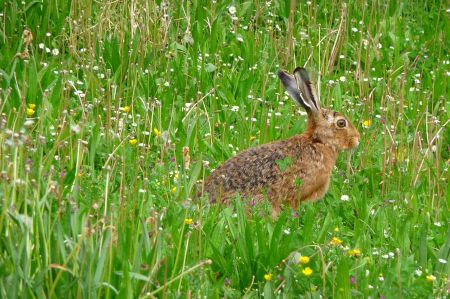Easter Bunny - Easter is the season for field hares!
- Written by Portal Editor
Everyone knows the morning ritual when the children become impatient on Easter Sunday and crowd around the breakfast table to go into the garden in search of brightly painted eggs and small presents.
This custom of a bunny painting eggs and hiding them in the garden at Easter has now developed across almost all of Europe.
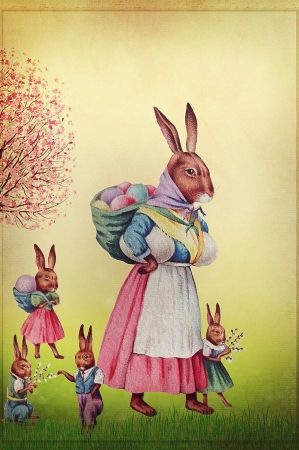 In our modern world, it is considered psychologically harmless to tell younger children that the Easter Bunny brings eggs and sweets for Easter. According to experts, this illusion of a rabbit delivering eggs stimulates the imagination and supports cognitive development. However, children's critical questions and doubts should be supported so that their belief in the rabbit eventually disappears on its own through exchanges with other children.
In our modern world, it is considered psychologically harmless to tell younger children that the Easter Bunny brings eggs and sweets for Easter. According to experts, this illusion of a rabbit delivering eggs stimulates the imagination and supports cognitive development. However, children's critical questions and doubts should be supported so that their belief in the rabbit eventually disappears on its own through exchanges with other children.
The Easter Bunny was first mentioned in literature by the medical professor Georg Franck von Franckenau in 1682 in the treatise “De ovis paschalibus – von Oster-Eyern”. For Upper Germany, the Palatinate, Alsace and neighbouring areas as well as Westphalia, he describes the custom of the Easter Bunny hiding the eggs in the grass and bushes in gardens, where children look for them to the joy and amusement of the adults. He calls the fact that the Easter Bunny hides the eggs “a fable that is told to simpletons and children.”
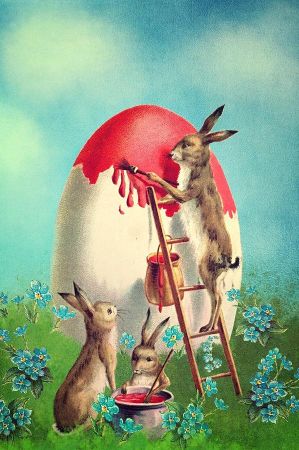 The connection between the Christian Easter and the egg as a symbol has been known for various European countries since the Middle Ages at the latest, but may also be much earlier. Since Ambrose, there has also been an older interpretation of the hare as a symbol of resurrection. The diverse Christian hare symbolism found expression in many images in the Middle Ages.
The connection between the Christian Easter and the egg as a symbol has been known for various European countries since the Middle Ages at the latest, but may also be much earlier. Since Ambrose, there has also been an older interpretation of the hare as a symbol of resurrection. The diverse Christian hare symbolism found expression in many images in the Middle Ages.
The interpretation of the hare as a symbol of life force, rebirth and resurrection comes from ancient times. Here is the root for representations in connection with the Christian Easter, in which the resurrection of Christ is commemorated. The depiction of a Madonna with the baby Jesus playing with a white rabbit, which is unusual in Christian iconography, as depicted by Titian in his Paris picture, can be interpreted here in Christological terms. Together with the basket of bread and wine, a symbol of Christ's sacrificial death, this representation can be read as a reference to Christ's resurrection after death.
However, the connection of the hare with the Easter egg custom is still unclear, although the fertility of the hare itself has a close connection to spring. The following hypotheses are often cited:
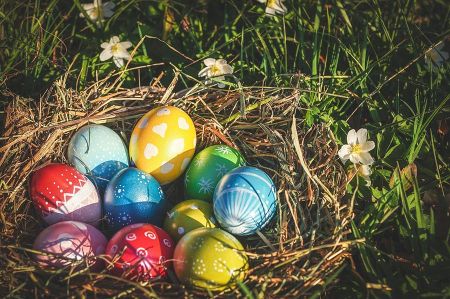 1. Some early painted Easter eggs show the three-hare image - a depiction of three rabbits with only three ears in total, where, due to the "dual use" of ears, each rabbit still has two ears; this is now a well-known symbol for the Trinity (the original meaning is unclear). It is possible that this depiction could have led one to think of the rabbit as a supplier of eggs.
1. Some early painted Easter eggs show the three-hare image - a depiction of three rabbits with only three ears in total, where, due to the "dual use" of ears, each rabbit still has two ears; this is now a well-known symbol for the Trinity (the original meaning is unclear). It is possible that this depiction could have led one to think of the rabbit as a supplier of eggs.
2. In one place in the Bible, Psalm 104.18 EU, older translations speak of “hares”. The reason for this was the Latin translation of Proverbs 30.26 EU, in which Jerome translated the Hebrew “schafan” (hyrax) as “lepusculus” (bunny). Since late antiquity, this passage has been interpreted as a symbol of the weak man (rabbit) who seeks refuge in the rock (Christ). This interpretation established the hare symbolism in Christian iconography.
Everything you always wanted to know about “Easter Bunny”!
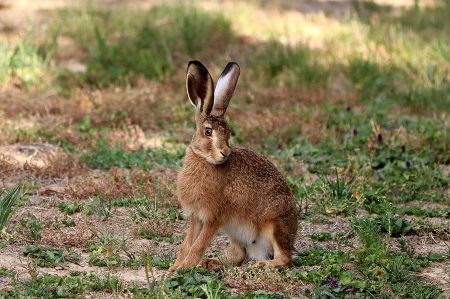 There are many questions about the brown hare: Does it have a family? Are female rabbits loyal and is the female rabbit a good mother? The German Wildlife Foundation has answers.
There are many questions about the brown hare: Does it have a family? Are female rabbits loyal and is the female rabbit a good mother? The German Wildlife Foundation has answers.
Brown hares are convinced solitary creatures: they do not live in a family. The female rabbit suckles the offspring, but young rabbits are independent from the fifth week onwards. There is no such thing as a family of rabbits hopping around the field together in harmony! Incidentally, the young bunnies from a litter can also have several fathers: at the bunny wedding, many bunnies try to find a female bunny. The female rabbit is often considered a bad mother just because she leaves her offspring alone in the field. But the rabbit is not a raven mother - on the contrary: she protects her offspring from predators when she comes late in the evening or at night to suckle the little ones. During the day, birds of prey, foxes and other enemies would only become aware of the offspring of rabbits through the female rabbit.
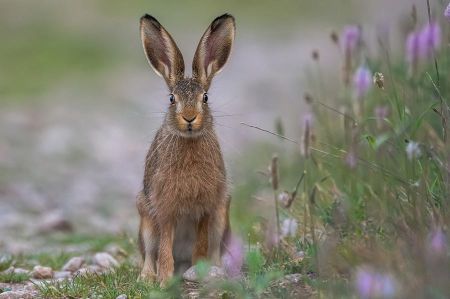 Although most people in Germany have seen brown hares, they are often confused with wild rabbits. But the Easter Bunny is not a rabbit! “On the surface, there is a certain similarity,” says Eva Goris, press spokeswoman for the German Wildlife Foundation. “But the differences are striking.” First of all, the brown hare is much larger and heavier than the rabbit. Adults weigh around four kilos - a wild rabbit, on the other hand, only weighs three pounds. The long spoons are immediately noticeable on the brown hare. Rabbits have shorter ears, which makes their “face” appear rounder and stockier. “The long hind legs of the brown hare make it a quick starter that can jump hooks and thus escape many enemies. Rabbits, on the other hand, run into the bushes as quickly as possible when danger threatens,” says Goris. From birth, the differences between the brown hare (Lepus europaeus) and the rabbit (Oryctogalus cuninculus) are obvious. “While brown hares are solitary creatures that scratch a hollow on bare ground, rabbits love the social life in underground burrow systems,” says Goris.
Although most people in Germany have seen brown hares, they are often confused with wild rabbits. But the Easter Bunny is not a rabbit! “On the surface, there is a certain similarity,” says Eva Goris, press spokeswoman for the German Wildlife Foundation. “But the differences are striking.” First of all, the brown hare is much larger and heavier than the rabbit. Adults weigh around four kilos - a wild rabbit, on the other hand, only weighs three pounds. The long spoons are immediately noticeable on the brown hare. Rabbits have shorter ears, which makes their “face” appear rounder and stockier. “The long hind legs of the brown hare make it a quick starter that can jump hooks and thus escape many enemies. Rabbits, on the other hand, run into the bushes as quickly as possible when danger threatens,” says Goris. From birth, the differences between the brown hare (Lepus europaeus) and the rabbit (Oryctogalus cuninculus) are obvious. “While brown hares are solitary creatures that scratch a hollow on bare ground, rabbits love the social life in underground burrow systems,” says Goris.
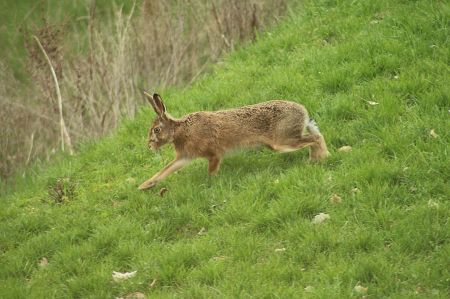 Brown hares are not wanderers: They are considered to be loyal to their location and spend their lives - which with a lot of luck lasts up to seven years - on an area of around 30 hectares. They have to face all kinds of dangers because the number of their enemies is large. Attacks from birds of prey, crows and corvids lurk from the air, while foxes, martens, dogs and cats wait on the ground. Humans also pursue the brown hare. Either he gets shot and ends up on the table as a roast, or he ends up as a traffic victim.
Brown hares are not wanderers: They are considered to be loyal to their location and spend their lives - which with a lot of luck lasts up to seven years - on an area of around 30 hectares. They have to face all kinds of dangers because the number of their enemies is large. Attacks from birds of prey, crows and corvids lurk from the air, while foxes, martens, dogs and cats wait on the ground. Humans also pursue the brown hare. Either he gets shot and ends up on the table as a roast, or he ends up as a traffic victim.
Please read as well:
